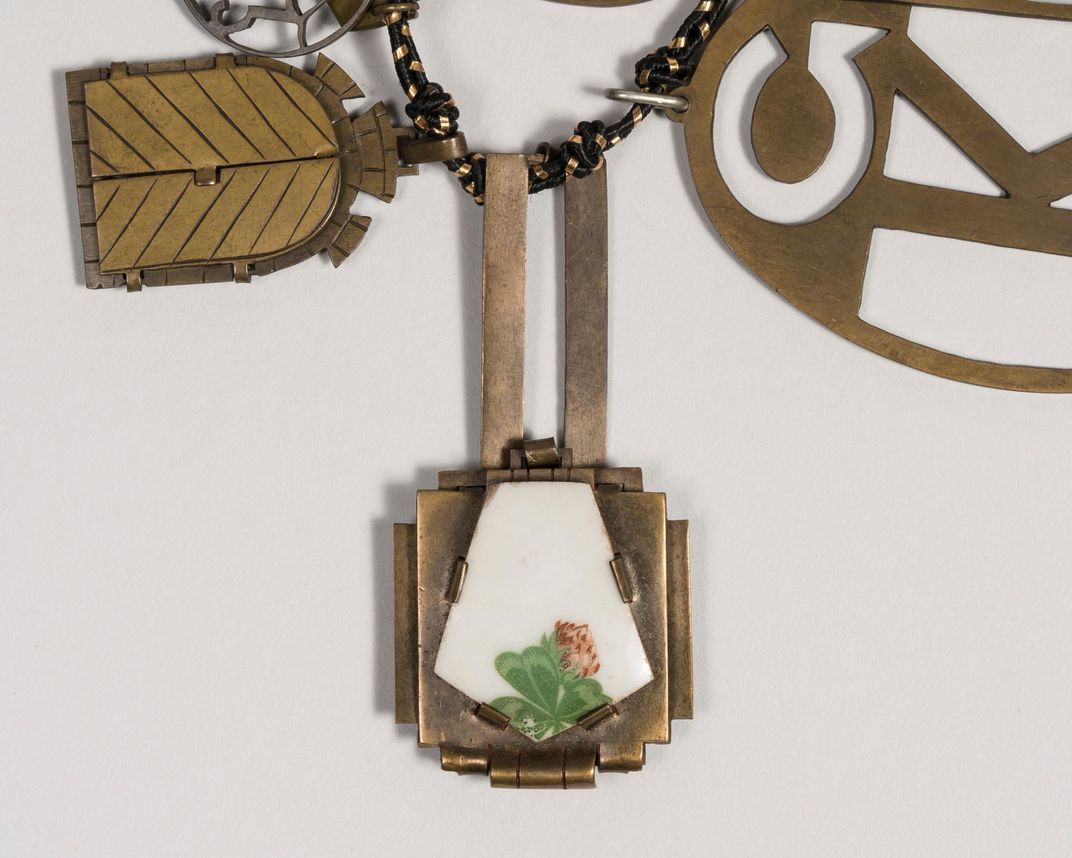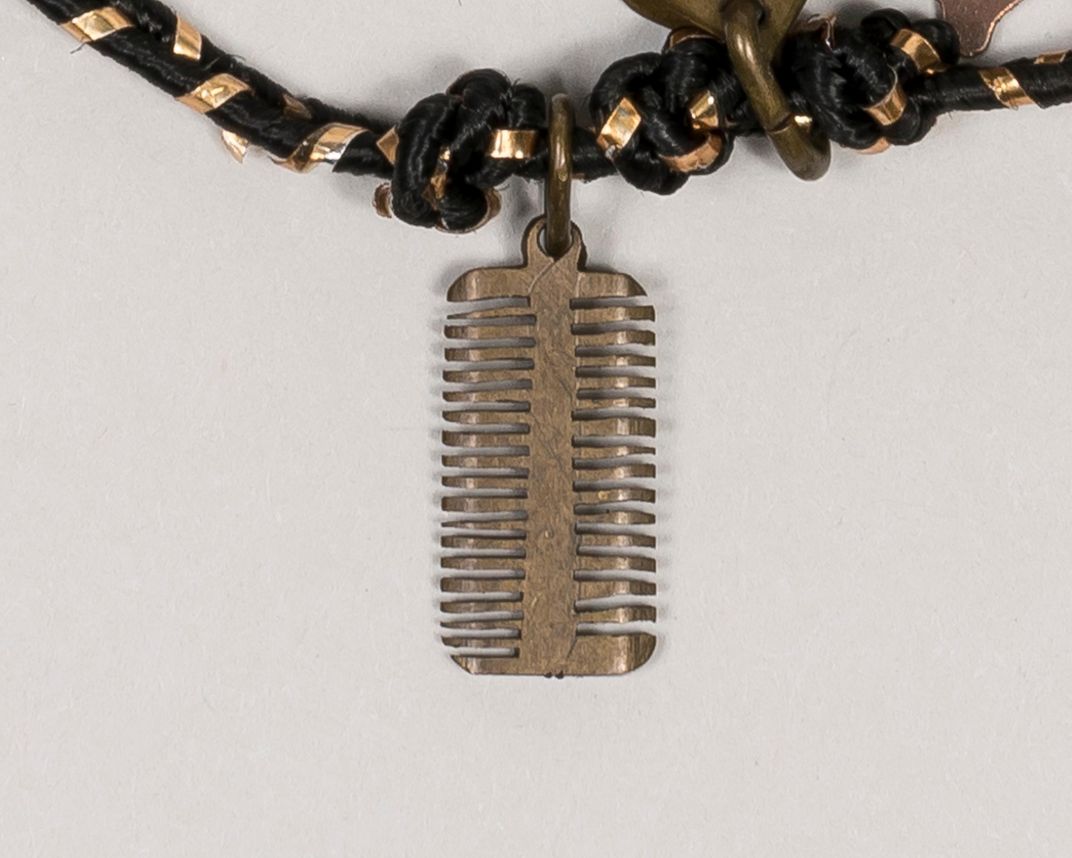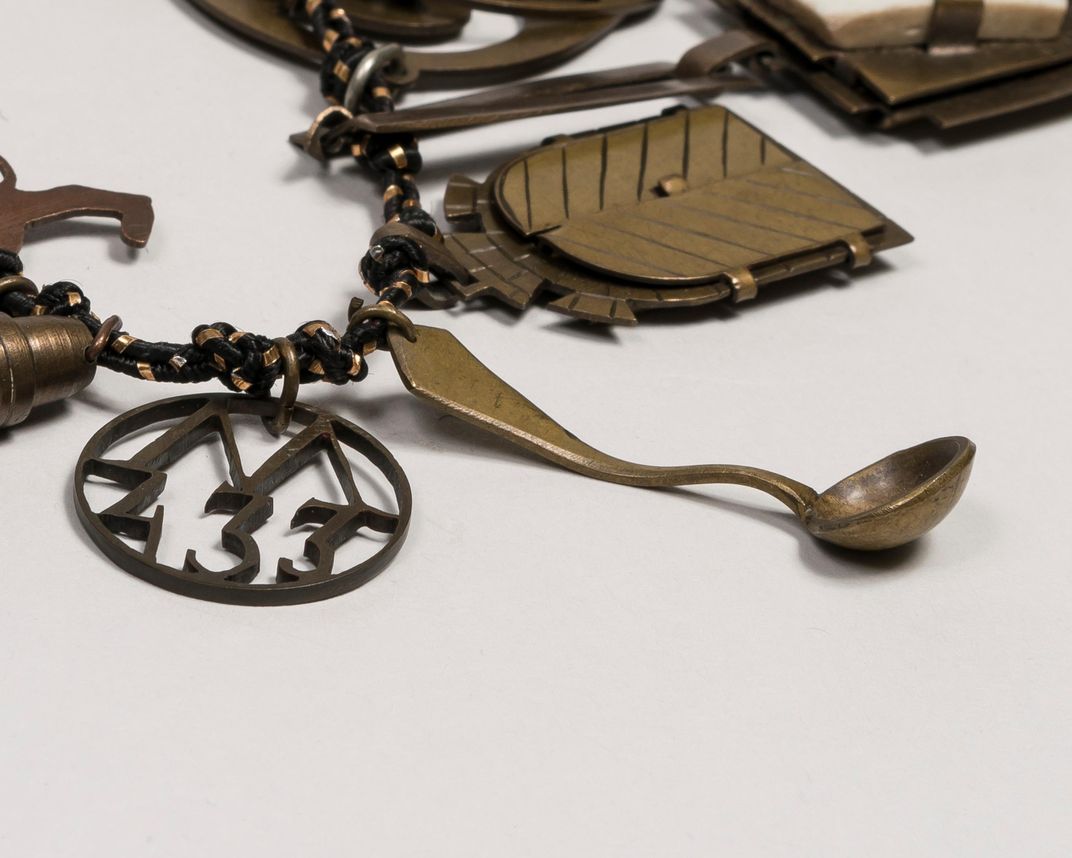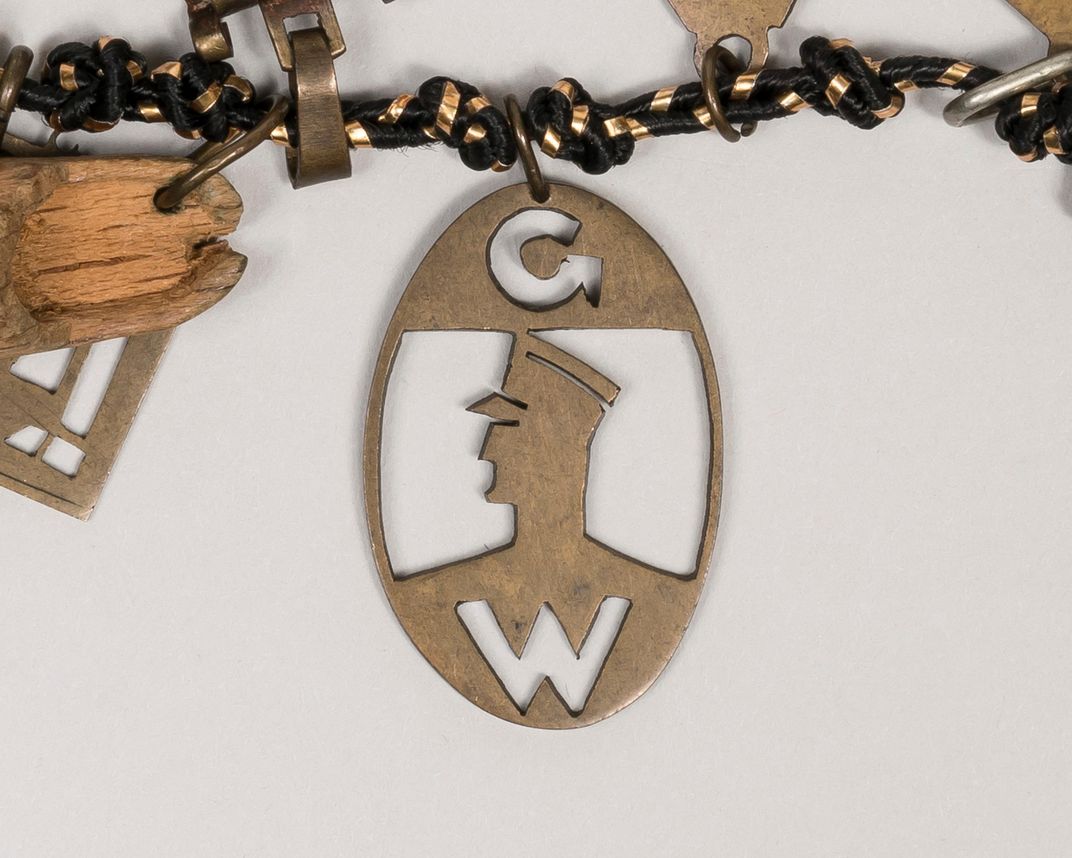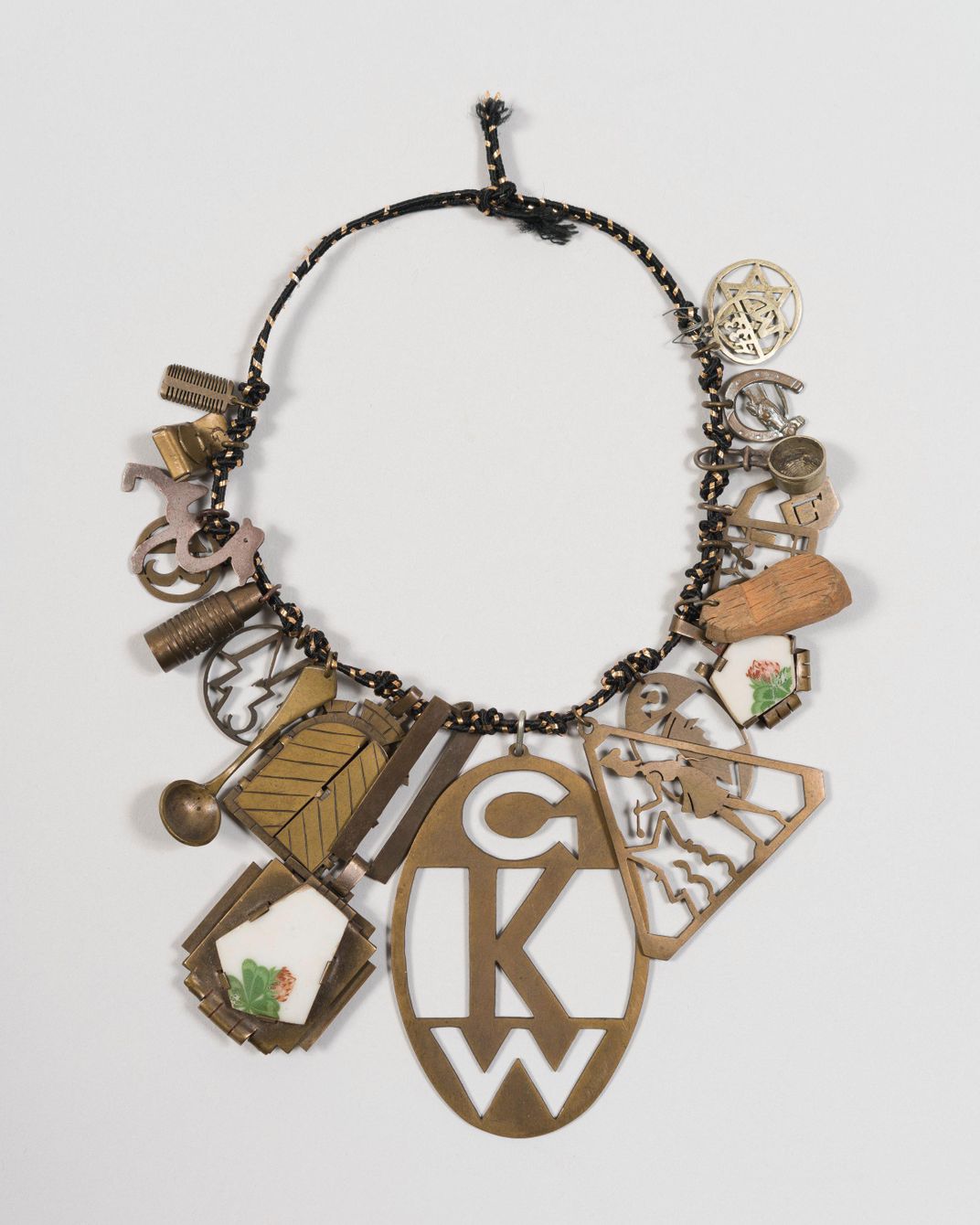This Remarkable Charm Bracelet Chronicles a Life Inside a Concentration Camp
Greta Perlman survived the Holocaust. The mementos she saved offer clues about how Jews endured the indignities and horrors of the Nazis
/https://tf-cmsv2-smithsonianmag-media.s3.amazonaws.com/filer/b5/a5/b5a53470-9f3b-4437-97ac-e316a178e0c5/-press_image_-_3000px_w_300dpi-16.jpg)
A charm bracelet tells the story of the life lived by its wearer – where one has called home, who one has met, and the circumstances one has experienced. But for Greta Perlman, born a Czech Jew in the Austro-Hungarian Empire in 1904, her jewelry documents her four years surviving the Holocaust. It’s a remarkable artifact, one that Michael Tal, a curator at Yad Vashem, the World Holocaust Remembrance Center in Jerusalem, called “quite unique, and I have not yet come across one like it.”
Perlman assembled her bracelet, currently on view as part of the newly installed permanent collection at the Jewish Museum of New York, at Theresienstadt, the Czech “camp-ghetto” established by the Nazis in late November, 1941. The camp was largely a ghetto labor camp, a holding pen where Jews stayed before being deported to killing centers like Auschwitz. Theresienstadt’s horror was muted enough that the Nazis used it as a propaganda tool, beautifying it for an International Red Cross inspection in 1944, and making a propaganda film there later that year. Some 140,000 Jews—including numerous musicians, writers and artists—were held in Theresienstadt.
The Nazis deported Perlman to Theresienstadt on “Transport M,” one of the earliest such trips, on December 14, 1941, her 37th birthday. According to Claudia Nahson, a curator at the Jewish Museum, the 20 charms on her bracelet, made from brass, porcelain and wood and strung together on a cord, were either given to her as personal mementos, or bartered in exchange for food. Many charms have a connection to a man named Theo, whom Nahson considers a possible love interest of Perlman. (Although Perlman, whose maiden name was Aufricht, was married, her spouse, Hanus Perlman, was not listed with her in the paperwork detailing Transport M.)
Among these potentially romantic charms are one that contains a Star of David encircling the initial, “T,” as well as two brass charms that each contain a ceramic shard in the shape of a pentagon, one inscribed “Greta Terezin 1.IX.43” on its back, the other inscribed “Theo Terezin 1.IX.43” on its back. The date, written in the European format for September 1, 1943, had a special meaning for Greta and Theo.
“It is a Jewish tradition to break a china plate after a couple becomes engaged and agrees to the tna’im, or conditions of marriage,” says Nahson. “The two matching potsherd charms suggest that Greta and Theo may have become engaged [on September 1 1943] in Theresienstadt.”
Nahson adds that from Nazi records, Holocaust scholars know that on September 5, 1943, the Germans sent two large transports of 5,007 prisoners in total from Theresienstadt to Auschwitz. She deduces that Greta and Theo became engaged once they learned of the planned deportation. “It is possible that Theo was [deported to Auschwitz], though this cannot be confirmed,” she says.
Another charm, an oval badge, holds another possible clue to their relationship. It carries the profile of a policeman and the initials GW, for Ghettowache, or Ghetto Police, which the Nazis established among Theresienstadt inmates to keep order in the camp in December 1941. But after the spring 1943 Warsaw Ghetto uprising, in which Polish Jews revolted against the Nazis, the Ghettowache was disbanded; its members were deported to extermination camps. According to Nahson, between autumn 1942 and late summer 1943, a kitchen was set up in the Ghettowache barracks. Perlman “may have worked there and been given the badge then. [Theo] may have been a member of the Ghetto Police and perhaps gave her this charm before his deportation.”
Many of the charms have a direct connection to Perlman’s work in the kitchen, including a miniature cooking pot whose bottom is inscribed “14 / XII. 1941,” the date of Perlman’s transport to Theresienstadt. A triangular charm displays a stylized figure of a female cook stirring a pot, which forms Perlman’s transport number, M 433; another charm is in the shape of a miniature cooking ladle.
Then there are charms that appear to have other personal meanings, including a good-luck horseshoe; a charm that depicts the silhouette of a window with a potted plant (it evokes “the safety and tranquility of home,” says Nahson); and a miniature wooden clog, one of the few new articles of clothing available in the camp.
Other charms serve as stark reminders of life in Theresienstadt. One is in the shape of a comb, used both for personal grooming and to remove the lice that was widespread among prisoners, and another replicates the camp’s fortified gate and opens to reveal the inscription, “M 433 Perlman Greta,” thus capturing her dual identify as “individual and prisoner, set within symbolic doors she was unable to open”. A bit of comic relief is provided by a charm that is a miniature latrine, decorated with the initial “G.” Nahson called this “the sort of wry joke that was common among prisoners, expressing a desire for privacy in a place where they were dehumanized.”
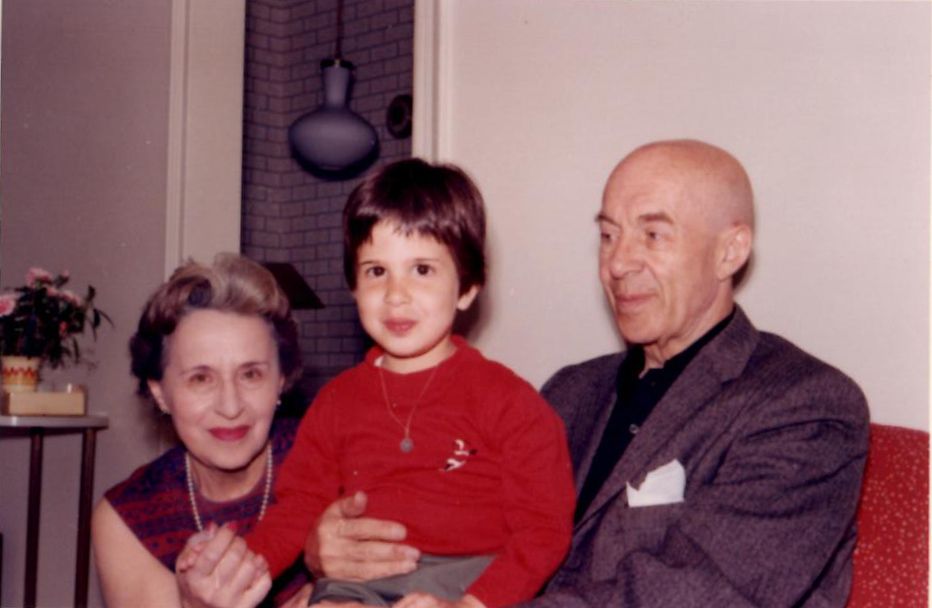
For Michael Tal, the Yad Vashem curator and director of artifacts at its museums division, Greta’s charm bracelet teaches him that in spite of the harsh conditions of incarceration, “Jews managed to create mementos and gifts decorated with symbolic depictions of their lives as prisoners in the ghetto.”
“The phenomenon of those who were imprisoned in the ghettos and camps fashioning mementos and small gifts for family or friends, whether on the occasion of a birthday or to mark some other event, was very common,” he adds, qualifying that he has never seen so many charms collected together on a single bracelet. “Generally, a craftsman or artist who was a forced laborer in a metal workshop had access to scraps of raw material and to tools that enabled him or her to create the mementos.”
These craftsmen, says Tal, would in turn receive a portion of the prisoner’s daily rations. To have an item that would express their identity, and provide a glimmer of hope necessary for survival, these prisoners had to forego sustenance of the stomach in favor of sustenance for the heart.
On October 4, 1944, Greta Perlman was transported to Auschwitz, and then later to Bergen-Belsen, where she was liberated; after the war, she immigrated to the United States. It’s not clear to Nahson how the charm bracelet itself survived the Holocaust, though she suggested Perlman might have hidden it in Theresienstadt when she was deported and later returned to retrieve it. It’s also unclear whether the charms were made into a bracelet during the Holocaust, or after.
Perlman, who died in 1975, bequeathed the bracelet to the Jewish Museum, along with a number of works of art made by other Theresienstadt inmates, both professional artists and amateurs. The story of her relationship with Theo, however, remained her secret. In the new exhibit, on display through August 5, the artworks she donated—a still life, cityscape and scenes from the camp—are on display in the same gallery as the charm bracelet, which is centered in the room. Visitors can use several iPads in the gallery to review detailed descriptions of each of the bracelet’s 20 charms.
To Greta Perlman’s great-niece, Laura Hoepfner, a 58-year-old from suburban Chicago, “The bracelet was a triumph of the human spirit—if you persevere enough, beauty will triumph over hate.” She sees the bracelet as an important artifact, a remainder to younger generations that “the Holocaust really did happen.”

